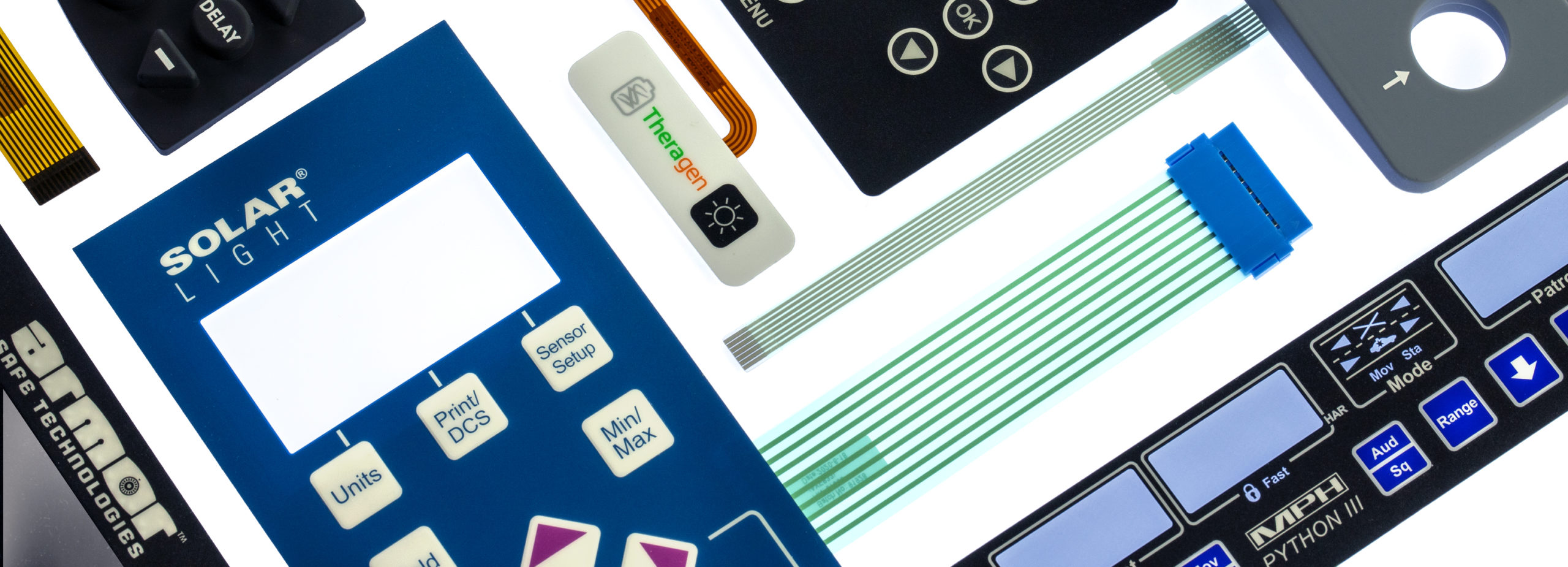The Role of Membrane Switches in Enhancing Device Functionality
The Role of Membrane Switches in Enhancing Device Functionality
Blog Article
Comprehending Membrane Layer Changes: The Key to Trustworthy and durable Controls

What Are Membrane Switches?
Membrane layer switches are an advanced option in the world of interface modern technology, integrating functionality and design perfectly. These gadgets act as a user interface in between individuals and electronic systems, integrating numerous parts into a small style. Commonly built from flexible, slim layers of materials, membrane buttons are developed to reply to touch, enabling customers to communicate with machinery and digital tools effectively.
The key elements of a membrane switch consist of a printed circuit layer, visuals overlay, and a spacer layer that prevents unexpected activation. The visuals overlay can be tailored to show brand name identity or individual choices, enhancing aesthetics while making certain usability. Membrane switches are frequently made use of in numerous applications, consisting of clinical gadgets, customer electronic devices, and industrial tools, owing to their toughness and resistance to environmental aspects such as moisture and dust.
One of the vital benefits of membrane layer switches is their ability to endure damage, making them suitable for high-traffic settings. In addition, they are light-weight and need minimal area, enabling for ingenious styles in item development. Overall, membrane layer changes stand for a efficient and sensible option for modern electronic user interfaces, marrying technology with user-centric design concepts.
Exactly How Membrane Changes Work
The operation of membrane layer switches joints on a simple yet effective system that equates user input right into electronic signals. When a user presses the button, the top layer warps, allowing a conductive component in the circuit layer to make call with an equivalent conductive pad on the underside of the visuals overlay.
The design of membrane layer switches can vary, but they commonly include domes or responsive components to provide feedback to the customer, enhancing the general experience - membrane switch. The materials made use of in membrane layer buttons, such as polyester or polycarbonate, contribute to their resilience and resistance to ecological factors, consisting of moisture and dust. In addition, the published circuits are commonly enveloped, which shields them from damage in time.
Advantages of Membrane Layer Switches

In addition, membrane layer switches are recognized for their resilience. Created from robust products, they are resistant to dirt, wetness, and physical wear, which dramatically expands their lifespan contrasted to standard mechanical buttons. This sturdiness makes them especially ideal for high-traffic atmospheres and applications calling for long life.
One more considerable advantage is the convenience of cleansing and maintenance. The smooth surface area of membrane changes reduces dust buildup and is commonly impervious to spills, making them ideal for settings that require constant sanitization.
In addition, membrane layer buttons offer a streamlined profile, causing a thinner style that can be integrated into numerous gadgets without adding bulk. This attribute not just boosts the aesthetic charm yet likewise adds to an extra ergonomic item style.
Applications of Membrane Layer Switches
Versatile and easy to use, membrane layer buttons discover applications throughout a variety of industries, consisting of medical devices, consumer electronic devices, and industrial devices. In the medical field, these buttons are essential to devices such as analysis tools, client monitoring systems, and mixture pumps, where integrity and simplicity of cleansing are important. Their ability to stand up to severe settings and maintain look at these guys capability makes them optimal for such applications.

In customer electronics, membrane layer switches are made use of in products like microwaves, washing equipments, and remote controls - membrane switch. Their sleek layout enables instinctive interface, boosting the overall customer experience while providing durability and resistance to tear and put on
Commercial tools additionally takes click for more info advantage of membrane buttons, especially in control panels for machinery and automation systems. These buttons provide defense versus dirt and moisture, guaranteeing constant performance in difficult settings. Furthermore, their customizable functions allow producers to tailor them to certain operational needs, boosting performance and performance.
Selecting the Right Membrane Switch Over
When picking a membrane button, it is vital to take into consideration numerous factors that influence performance and viability for certain applications. The key considerations consist of environmental problems, responsive feedback, sturdiness, and layout specs.
First, analyze the operating environment; switches revealed to wetness, chemicals, or severe temperatures need details products to make sure long life and functionality. Next, evaluate the requirement for tactile feedback. Depending upon user communication, some applications may gain from a responsive response to confirm activation, while others may favor a non-tactile style for visual reasons.
Durability is an additional vital element; membrane switches must be created to withstand regular use, impacts, and abrasion. Guarantee the picked button can withstand the anticipated lifecycle, specifically in high-usage scenarios.

Final Thought
In final thought, membrane layer changes offer as important components in the layout of sturdy see this and trustworthy control systems across different markets. The flexibility of membrane changes permits for customized remedies that satisfy certain functional requirements, enhancing their value in modern technology.
Membrane switches over stand for a crucial element of contemporary user interface design, mixing functionality with durability in numerous applications.Membrane layer buttons are a sophisticated option in the world of individual interface innovation, incorporating capability and design effortlessly. Normally created from versatile, slim layers of materials, membrane layer buttons are developed to react to touch, making it possible for customers to connect with equipment and electronic tools successfully.
The design of membrane layer switches can vary, however they often incorporate domes or tactile components to offer comments to the individual, boosting the overall experience.In verdict, membrane layer switches serve as crucial components in the layout of durable and trusted control systems across different sectors.
Report this page